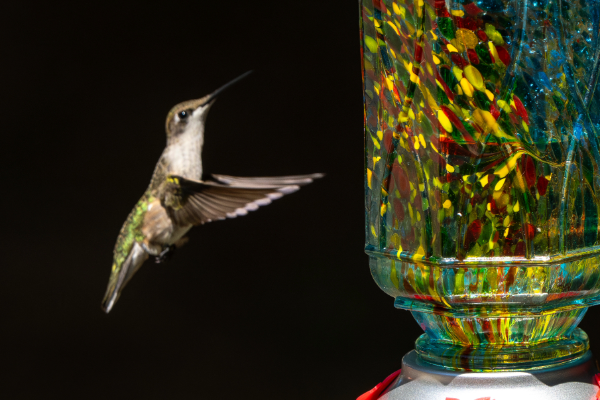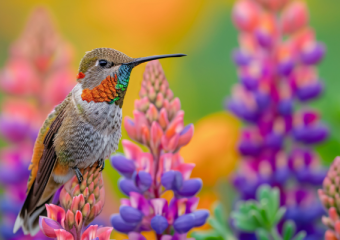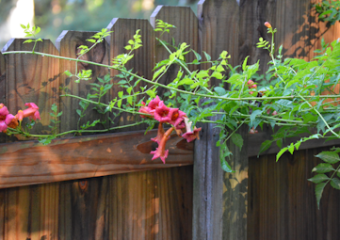Hummingbird Nectar Plants: 10 Stunning Tropical Must-Haves
Looking at Getting the Hummers as Must Free Nectar as Possible: What Do They Find in Central America’s Tropics?
Hummingbirds, often affectionately called “hummers,” are remarkable for their dazzling colors, incredible flight abilities, and, notably, their insatiable appetite for nectar. When these tiny birds migrate southward from North America to their winter homes in Central America, they embark on a journey that requires them to find abundant food sources to sustain their high metabolism. So, what are the 10 plants hummingbirds will find in the tropical regions of Central America that support them during this time? Are these plants abundant, and are they exclusive to tropical regions? Let’s explore.
The Importance of Nectar for Hummingbirds
Hummingbirds rely heavily on nectar as a primary food source. Nectar provides the quick energy they need to maintain their rapid wing beats and active lifestyles. During migration, finding reliable and plentiful nectar sources is crucial for survival. Central America’s tropical regions offer a diverse array of flowering plants that serve as vital fuel stops for these vibrant birds.
10 Key Nectar Plants for Hummingbirds in Central America
Here’s a list of the top 10 nectar-producing plants that hummingbirds feed on during their winter stay in Central America:
-
Heliconia (Heliconia spp.)
Often called lobster-claw or wild plantain, heliconias are striking plants with brightly colored bracts that hold nectar-rich flowers. They are quite abundant in tropical forests and gardens, making them a favorite source of nectar. -
Fuchsia (Fuchsia spp.)
Native to Central and South America, these hanging, bell-shaped flowers provide a rich nectar source and attract hummingbirds with their vivid reds and purples. -
Salvia (Salvia spp.)
Many species of salvia thrive in tropical climates, with tubular blossoms perfectly shaped for hummingbirds’ long bills. These flowers bloom prolifically, offering nectar through much of the year. -
Lantana (Lantana camara)
This hardy shrub boasts clusters of small, colorful flowers that produce copious nectar, drawing hummingbirds in large numbers. Lantanas are widespread, often found in disturbed areas and gardens. -
Ixora (Ixora coccinea)
Often called jungle flame or flame of the woods, ixora has dense clusters of small flowers rich in nectar, providing an attractive feeding spot. -
Costus (Costus spp.)
Sometimes called spiral gingers, these plants have unique spiral stems and tubular flowers with abundant nectar. They are common in tropical forest understories. -
Bouvardia (Bouvardia spp.)
These delicate, star-shaped flowers come in bright colors and are valued by hummingbirds for their sweet nectar. -
Mimosa (Mimosa spp.)
Though more famous for their feathery leaves, mimosa flowers also attract hummingbirds with their nectar, especially in open, sunny areas. -
Cana lily (Canna indica)
With large, bright flowers, canna lilies are accessible nectar sources, often planted in gardens and accessible to hummingbirds even near human settlements. -
Combretum (Combretum spp.)
Known as tropical bushwillows, these shrubs produce clusters of tubular flowers consumed eagerly by hummingbirds.
Are These Nectar Plants Abundant in the Tropics?
The good news for hummingbirds is that many of these plants are not just present but quite abundant throughout Central America’s tropical zones. The region’s warm, humid climate promotes year-round flowering, ensuring a steady supply of nectar. Natural forest edges, gardens, roadside vegetation, and disturbed areas all boast a variety of these blossoms. This abundance helps hummingbirds maintain the energetic demands of migration, territorial disputes, and breeding while they remain in the tropics.
Are These Plants Exclusive to Tropical Regions?
While many of these nectar plants are native to tropical America, several species have wider ranges or have been introduced into other climates:
- Heliconia, Ixora, and Costus are mostly confined to tropical climates, thriving in their native humid habitats.
- Salvia has species adapted to a variety of environments, including temperate zones, which means similar nectar sources may be found farther north or south outside the strict tropics.
- Fuchsia species are diverse, with some growing in temperate highlands in Central and South America, meaning they aren’t strictly tropical.
- Lantana is native to tropical regions but has naturalized in many subtropical and even warm temperate areas globally.
Thus, while Central America’s tropics provide a rich and reliable selection of nectar sources, the plants hummingbirds rely on are not exclusively tropical. Some have broader distributions that support hummingbirds in various climates throughout their range.
Conclusion
Understanding the nectar plants available to hummingbirds during their winter migration to Central America sheds light on how these delicate birds survive their long journeys. The abundance of key nectar-producing plants such as heliconias, salvias, lantanas, and fuchsias ensures that “getting the hummers as must free nectar as possible” is a realistic scenario in these lush tropical habitats. While many of these plants are native and thrive primarily in the tropics, several have expanded their ranges, offering hummingbirds a dependable nectar buffet wherever they may travel. For enthusiasts and conservationists alike, planting and protecting these species is vital to support hummingbird populations year-round.






